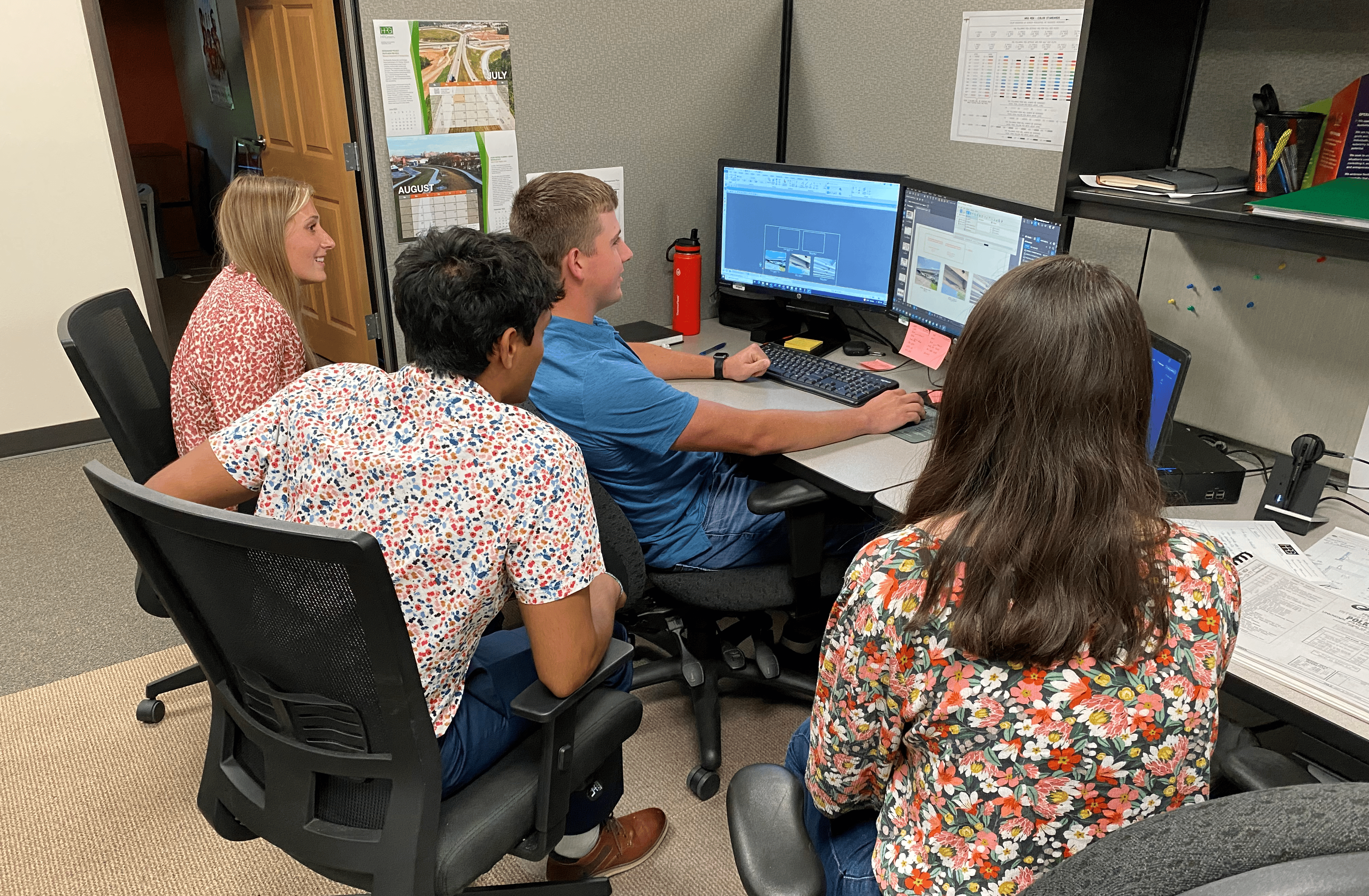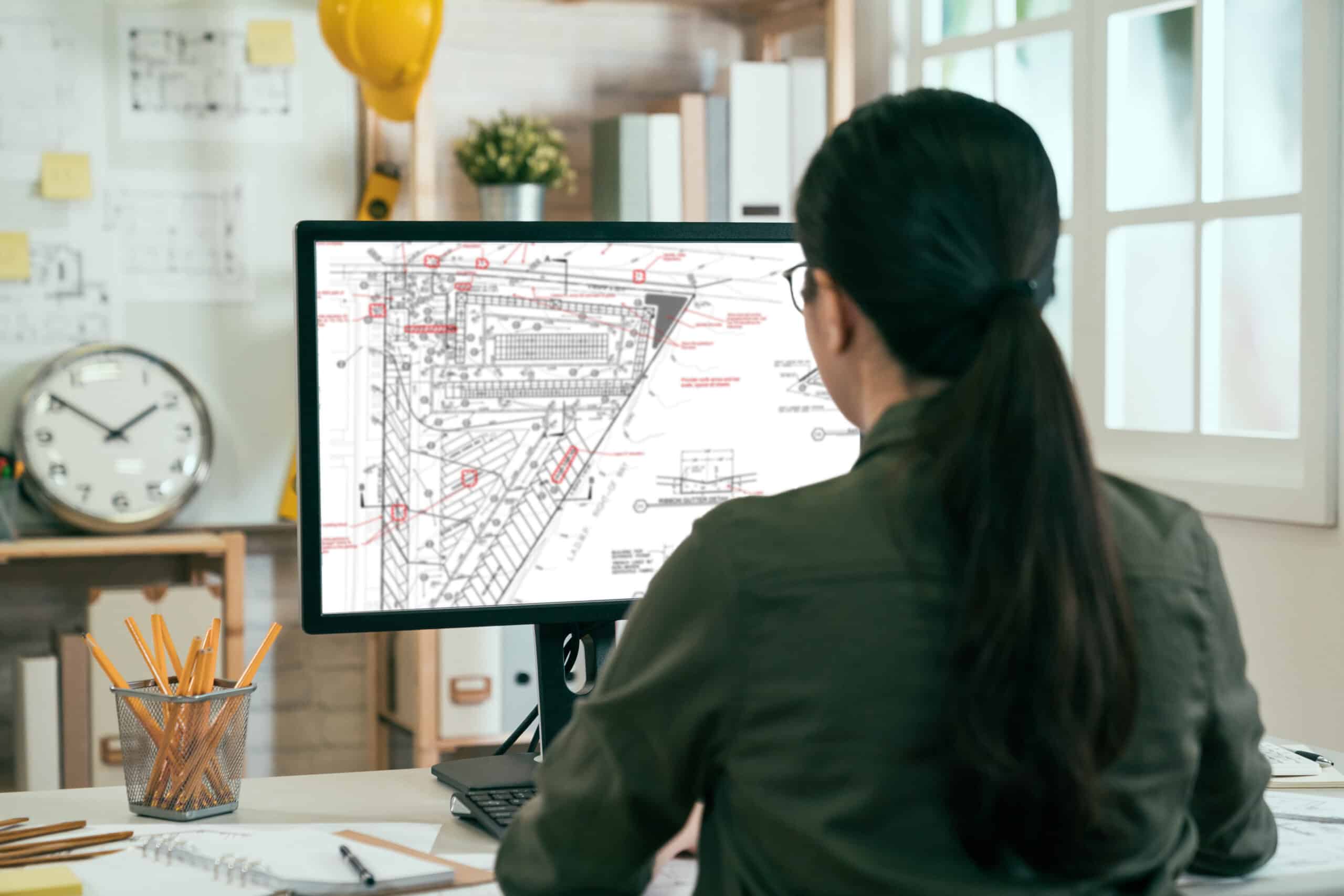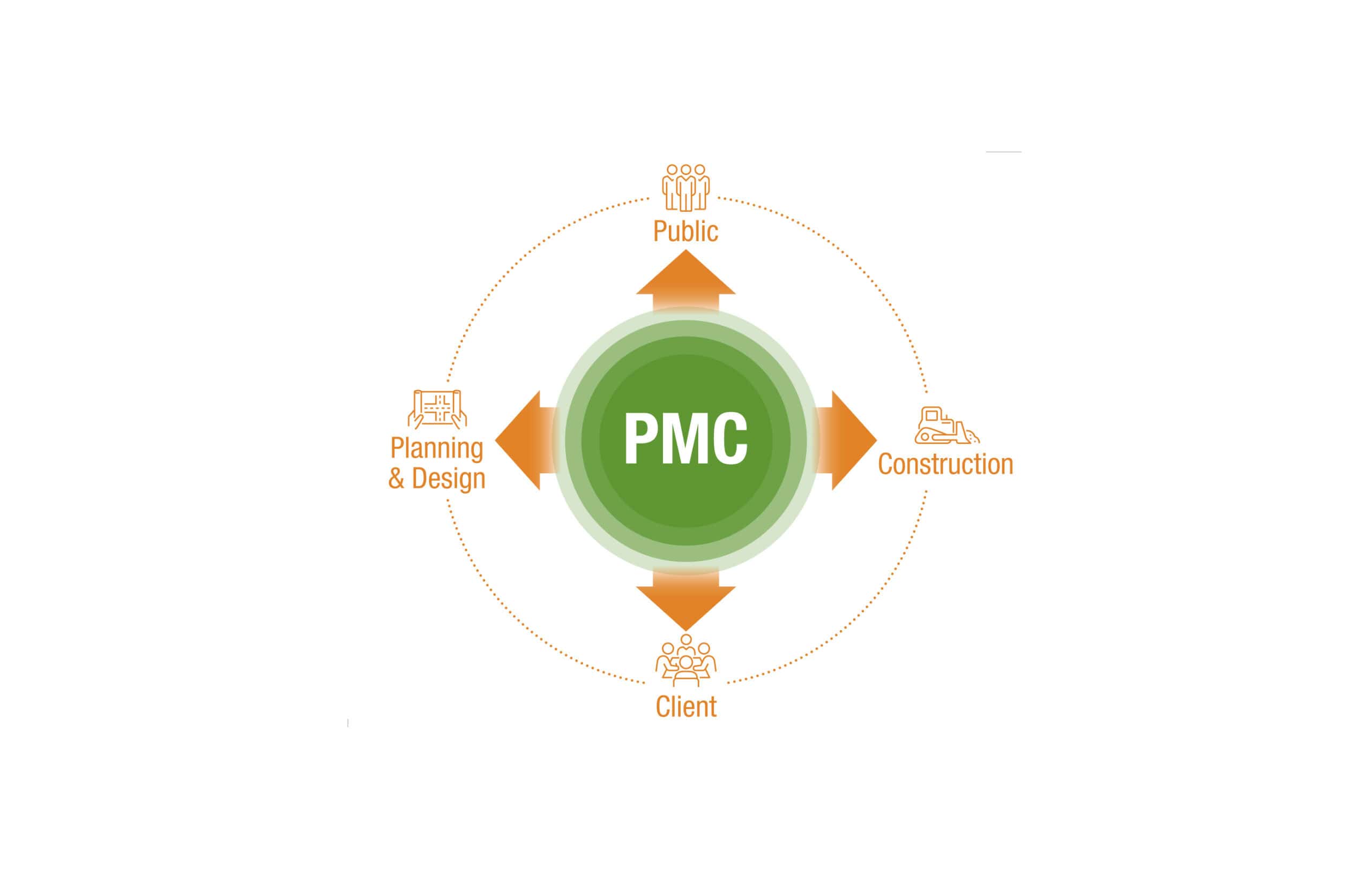
Low-Impact Design Empowers Future Urban Runoff Management Designs
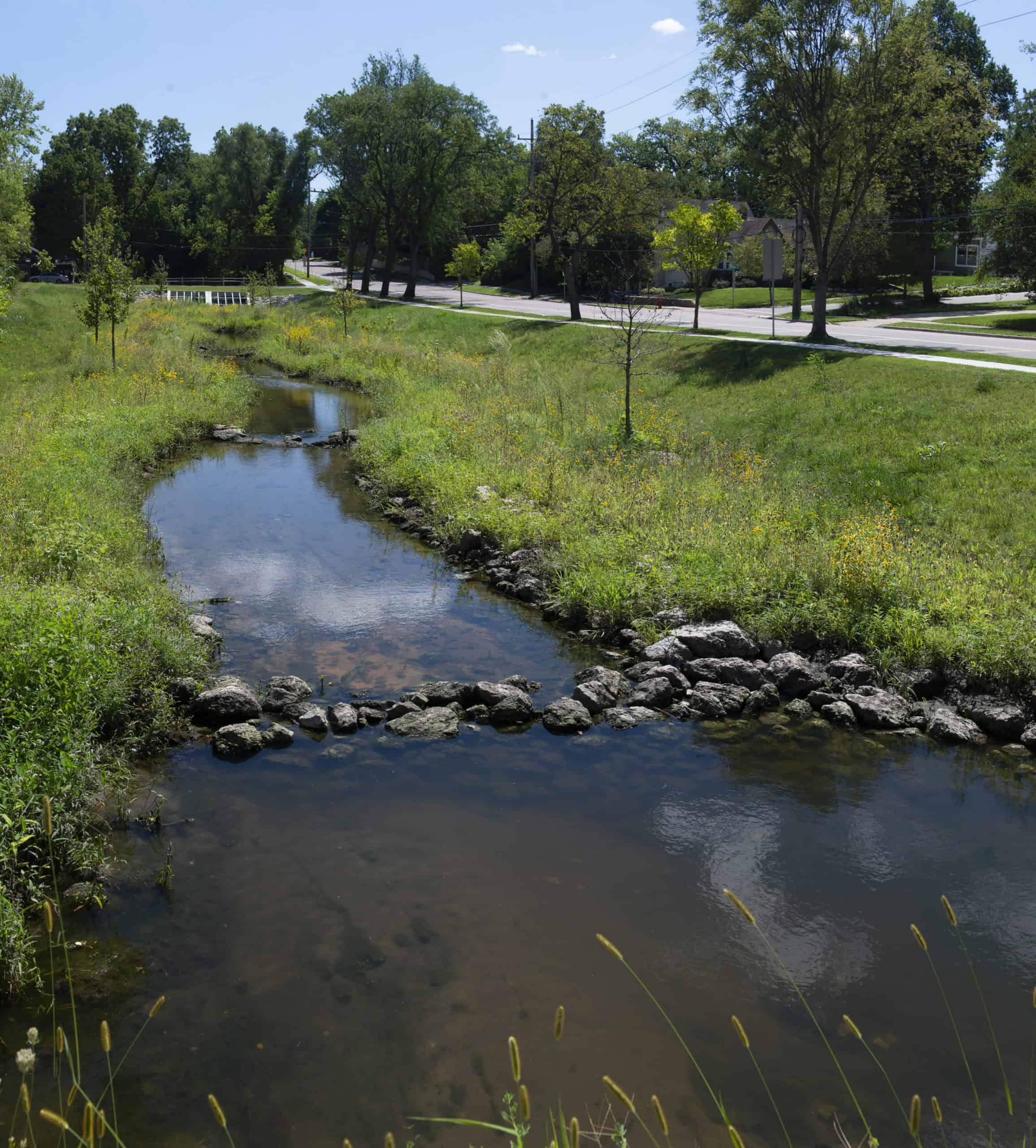
HR Green’s teams are well-versed in planning and constructing low-impact designs (LID) in land development. LID techniques continually grow in popularity as communities look for environmentally friendly practices when building communities and improving the lives of residents.
What are low-impact designs?
Low-impact designs (LID) work with nature to mimic natural processes to preserve and restore the environment. In particular, LID is focused on the natural management of stormwater runoff through the creation of green spaces, the limitation of impervious surfaces, and the implementation of green water infrastructure.
5 Core Principles of LID:
- Conserve natural areas wherever possible (don’t pave the whole site if you don’t need to).
- Minimize the development’s impact on hydrology.
- Maintain runoff rate and duration from the site (keep water onsite).
- Scatter integrated management practices (IMPs) throughout your site. IMPs are decentralized, microscale controls that infiltrate, store, evaporate, and/or detain runoff close to the source.
- Implement pollution prevention, proper maintenance, and public education programs.
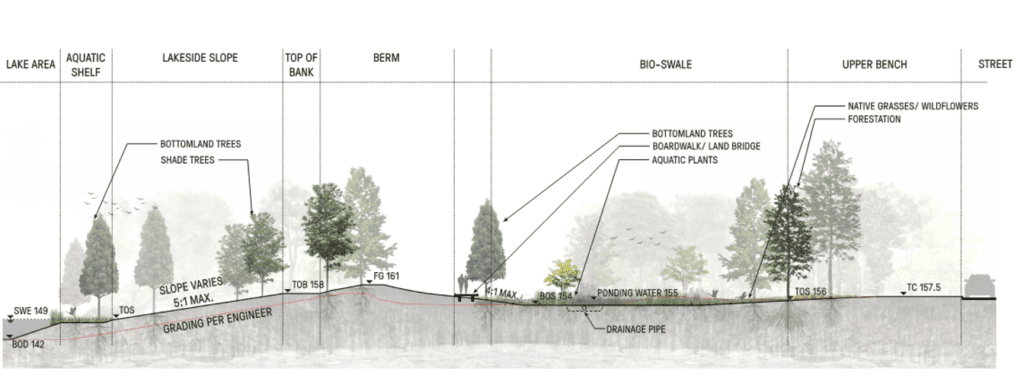
Why do communities benefit from LID?
Low-impact designs offer many benefits to the community and the environment, both short- and long-term. Developing land directly impacts ecosystems. LID actually creates habitats for local plants, insects, and wildlife, creating aesthetically pleasing sites that increase property value and appeal to residents. Residents of low-impact designs also benefit from recreational outdoor spaces, improving public health and overall quality of life. In addition, low-impact designs reduce the threat of flooding while improving water quality.
In addition to the environmental and quality of life benefits, low-impact designs also offer several economic benefits.
- The amount of site grading and preparation is decreased
- Site of stormwater management ponds and storm sewers are decreased
- Pipes, inlet structures, curbs, and gutters are reduced
- The volume of concrete for roadway paving is decreased
- Grants and incentives for LID development are available
- Benefits for developers, homeowners, community, and environment
As an approach to land development that works with nature to mimic natural processes to preserve and restore the environment, low-impact designs can benefit projects of any size, located anywhere. Common LID practices include rain gardens, sidewalk planters, curb extensions, street trees, permeable pavements, and cisterns. Any of these practices can be implemented in small urban areas as well as larger new developments.
Low-Impact Design Projects
HR Green has completed several low-impact design projects across the U.S. Recently, the process has been transformed into a green engineering method as the benefits of these LID techniques become better understood.
St. Charles Flood Reduction and Stream Restoration
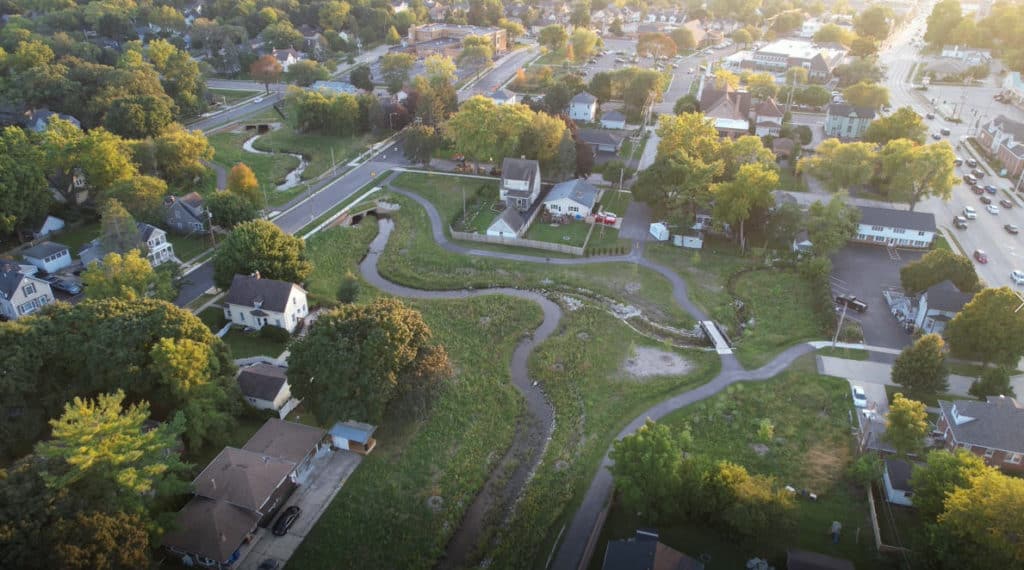
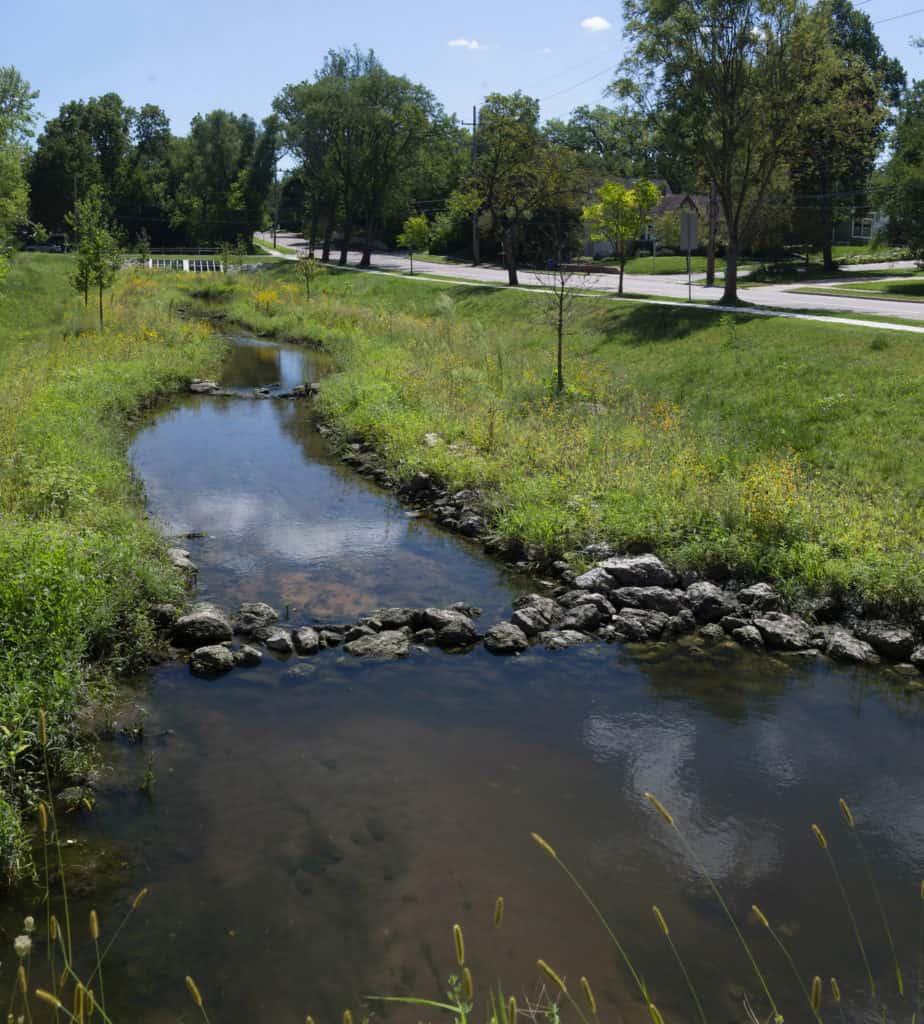
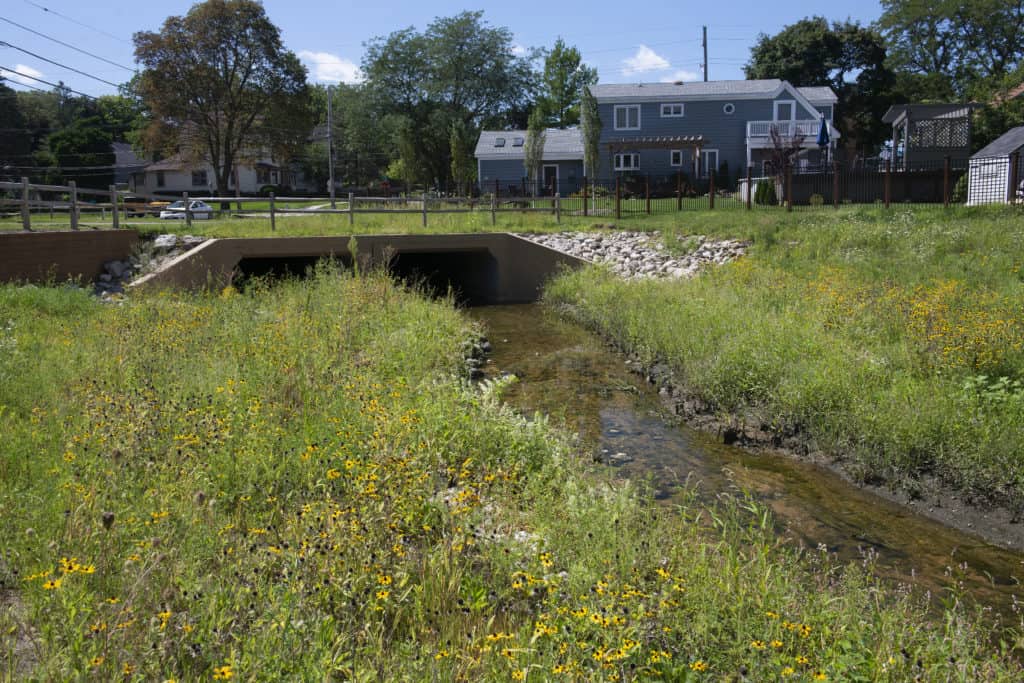
The 7th Avenue Creek traverses from east to west through the heart of St. Charles, Illinois and provides an amenity to the residents that live along the creek. When a 2008 flood event far exceeded the limits of the mapped 100-year flood boundaries, FEMA prepared a revised Flood Insurance Study (FIS), which resulted in flows increasing by approximately 250% and the 100-year Base Flood Elevations (BFE) increasing by almost 3 feet. Approximately 118 properties (residential and commercial) were impacted by the revised floodplain maps, including newly mapped properties in the floodplain. Significant portions of the creek were also identified as highly channelized and eroded, with riparian areas in poor condition as a result of urbanization.
The City of St. Charles hired HR Green to help with preparing a Master Plan to mitigate the impacts of the newly mapped floodplain while achieving multi-faceted benefits of reduced property impacts, economic redevelopment, and improved water quality. The low-impact design utilized a holistic and strategic approach to opening the creek by buying out targeted properties for improving conveyance and floodplain storage; installing meanders, pools, riffles, and grade control structures; and planting native vegetation to improve water quality, floodplain function, and habitat, aesthetics, and quality of life. This approach was also supportive of a sustainable strategy to address climate change (increased flows) and resiliency (reduced depth and duration of flooding and improved safety) for long-term community benefit.
The 7th Avenue Creek project was overwhelmingly supported by the community. It is environmentally friendly and is a great example of a flood reduction and water quality project. While it will help satisfy the environmental needs of the watershed, it also enhances the quality of life with reduced flooding and improved resiliency and ultimately provides an attractive natural amenity the community can enjoy long-term.
Woodlands Neighborhood
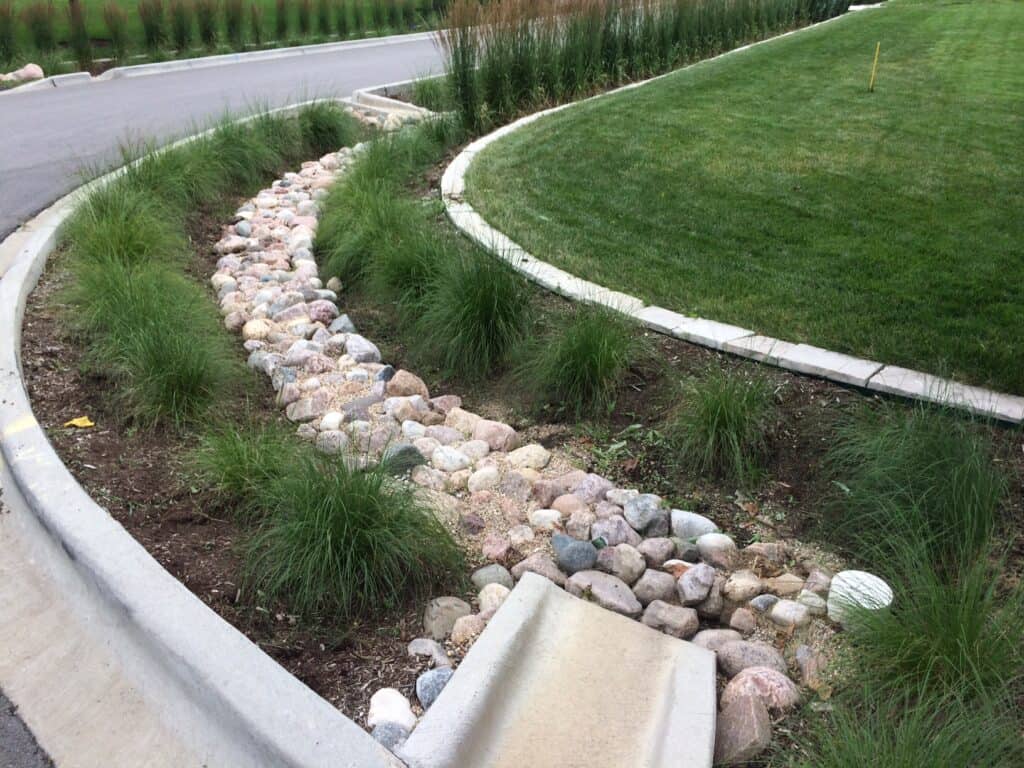
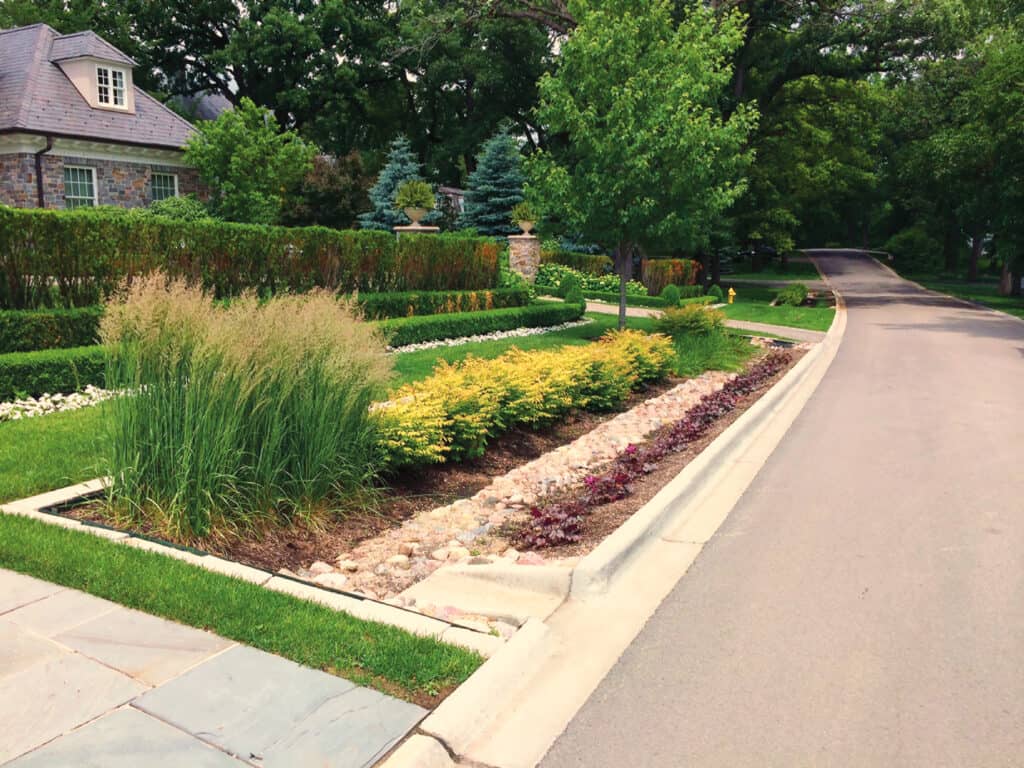
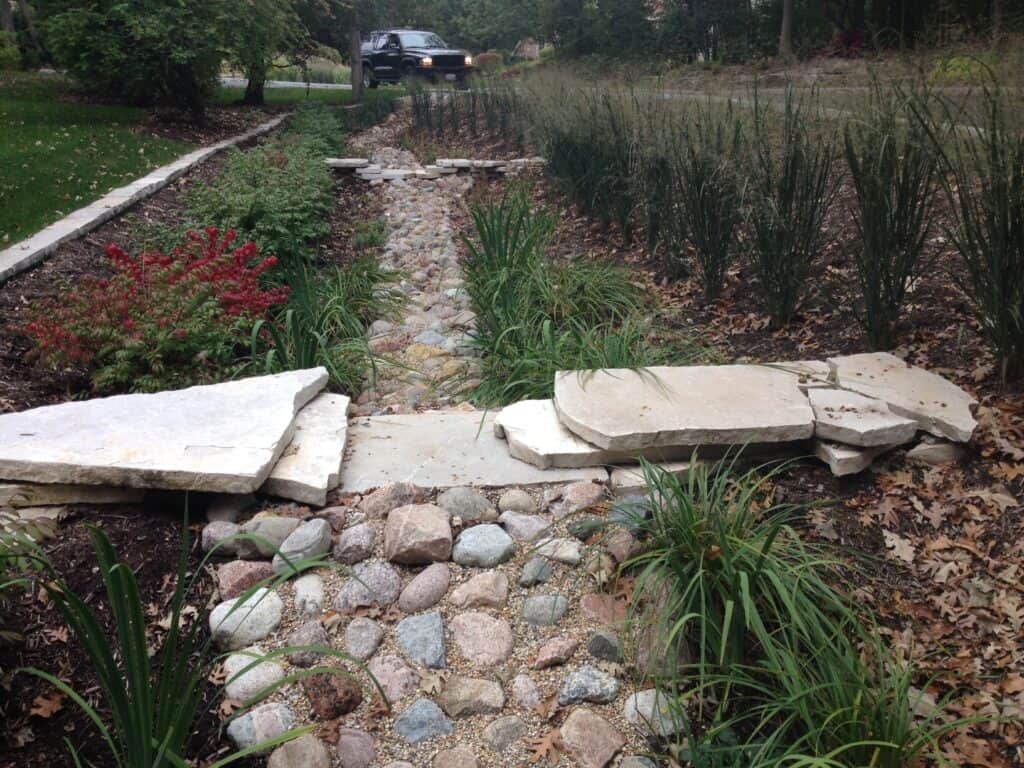
The Woodlands Neighborhood in Hinsdale, Illinois, has had a long history of challenges related to surface water management resulting in damage to homes and personal property as well as making roads impassable. One of the goals in managing stormwater runoff was to maximize the use of “green initiatives.” The Woodlands Neighborhood project implements many sustainable low-impact design concepts throughout the neighborhood to provide the desired level of protection from surface water runoff and cost savings over conventional conveyance systems.
Equally important to this LID initiative was the goal to cleanse stormwater runoff pollution from the street, utilizing rain gardens and bio-swales throughout the neighborhood. HR Green has developed design strategies to minimize the costs associated with the proposed infrastructure improvements by minimizing the number of stormwater pipes where feasible. The environmental benefits include a reduction in stormwater pollutants, an increase in stormwater infiltration, and the preservation of existing trees.
Build Better with HR Green
Our services are more than just lines on paper. Every member of the HR Green team is an active contributor to building our communities and improving the lives of every person in every place where we work.
We partner with private and public sector clients to provide land planning, engineering, and landscape architectural services in commercial, residential, and institutional industries. Learn more about how our land development teams can partner with your next investment.
Connect with us today to get planning on your next project!
Subscribe to HR Green Insights
We're dedicated to providing up-to-date knowledge and insights about the topics that matter most to you. We know how busy you are, so we will keep this simple, covering just one topic per email. Once you've subscribed, you can easily customize your preferences to receive only the updates relevant to you.
